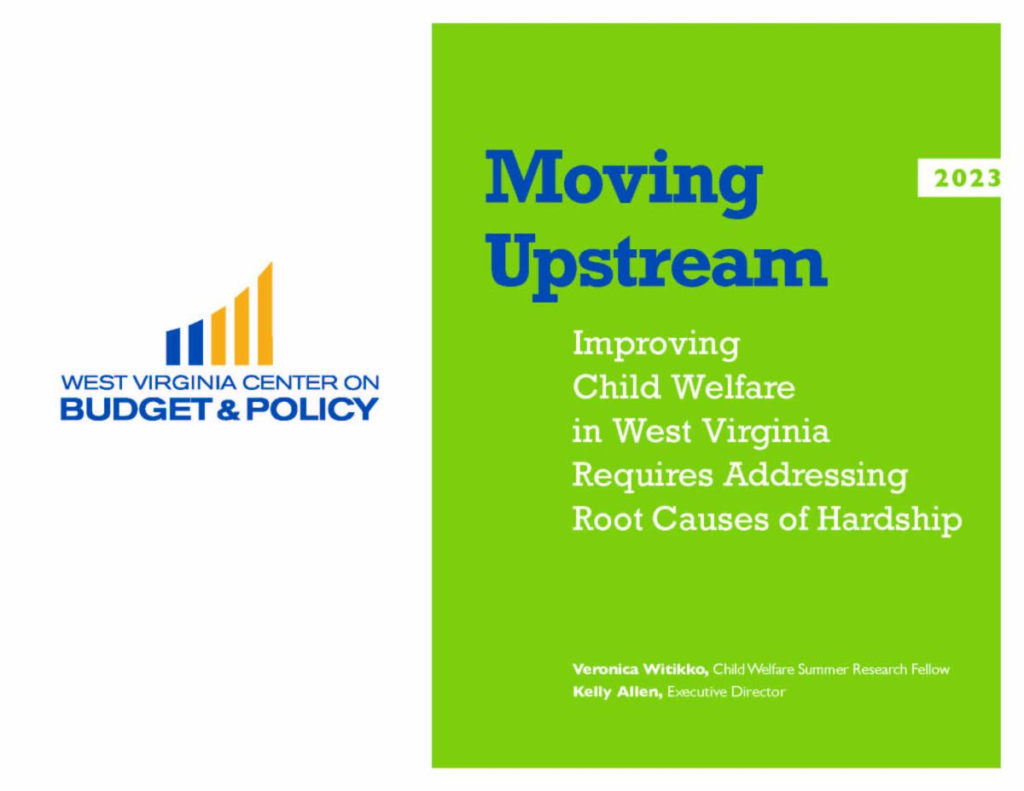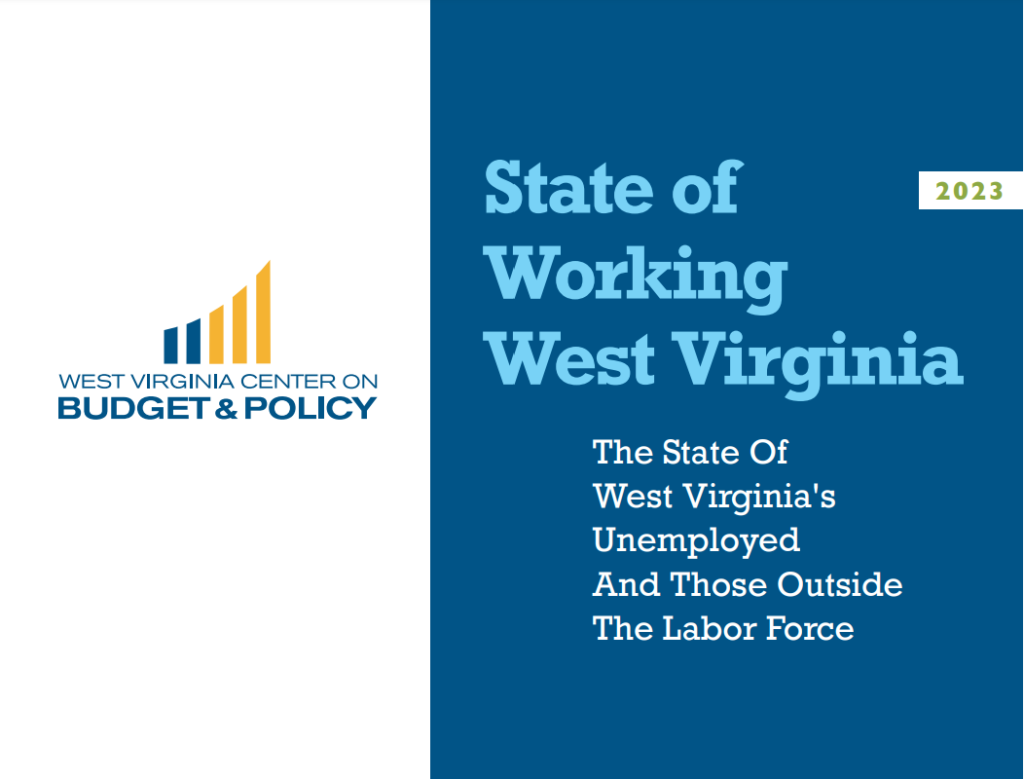West Virginia’s child welfare system is in crisis. Currently, the Mountain State places four times as many children per capita in the foster care system as the United States as a whole. West Virginia permanently terminates parental rights faster and more often than any other state in the country. While the child welfare system is designed to protect children, foster care involvement can have harmful effects on children and their families.
Recognizing the trauma of separation and the important bonds that children share with their families, federal law requires states to enact reasonable efforts through services and supports to preserve and reunify families. However, West Virginia’s high per capita rates of children in foster care and the frequency and speed with which parental rights are terminated suggest that our state is falling short of its obligation to make reasonable efforts to help children remain with their families.
The WVCBP’s new report details why improving the child welfare system in West Virginia requires addressing the root causes of hardship for families—often related to disordered substance use and economic insecurity—and provides recommendations for how our state can begin to do so. The report was authored by executive director, Kelly Allen, and child welfare research fellow, Veronica Witikko.
Key Findings
“The issues within our child welfare system are systemic in nature rather than the result of individual moral failings among parents who are struggling. One of the most effective ways to reduce systemic harm is to focus attention and efforts on preventing families from encountering the child welfare system in the first place,” says Witikko. “For West Virginia to better serve families, help children thrive, and reduce the number of children being placed in our foster care system, we must prioritize policy change upstream of the foster care system. Families need supports before they are in crisis.”
Recommendations to Address Root Causes of Hardship
West Virginia’s future depends on our ability as a state to nurture the health and well-being of the next generation of West Virginians—our children. Essential to that goal is investing in high-quality, evidence-based programs to reduce and prevent child abuse and neglect. By providing the concrete economic and social supports highlighted above to households broadly, fewer families will become involved in the child welfare system.
You can read the full report here.

The first quarter of FY 2024 ended with West Virginia collecting $109 million less than it collected in the first quarter of FY 2023, though the state did exceed the artificially low revenue estimates set by Governor Justice’s administration. Most of the gap compared with last year was due to a collapse in severance tax collections, which are $199 million below FY 2023 levels through the first quarter. However, disappointing income tax revenue growth—self-inflicted by tax cuts—is also a contributing factor.
While Governor Justice’s recent press release highlights the “surplus” from September’s collections exceeding the revenue estimate, that surplus largely derives from a fairly conservative revenue estimate. Despite collecting $638.8 million in September of FY 2023 and the month of September historically bringing in relatively high revenues, the estimate for this September was just $467.9 million, making exceeding the revenue estimate a low bar to clear even after accounting for income tax cuts. Overall, the revenue estimate for the full fiscal year is $1.6 billion below actual collections for FY 2023.
While the decline in severance tax collections is cause for concern, global factors remain the primary cause of low energy prices and are largely out of the West Virginia Legislature’s control. However, a lack of growth in the income tax is the direct result of income tax cuts passed earlier this year by the Legislature.
While income and overall tax collections in September were stronger than in previous months of the fiscal year, they likely represent an anomaly rather than a positive overall trend. Since the income tax cuts were enacted, both income and overall tax revenue have steadily declined compared to the previous year, with the exception of September. This suggests that September’s numbers are more likely the result of a one-time bump caused by factors like the timing of collections, rather than being a true indicator of a strong economy permanently boosting revenue. Indeed, when it comes to jobs, GDP, and personal income, West Virginia’s growth over the past year has been mediocre. There is no sign elsewhere in the economy that September’s economic growth was stronger than in the preceding months for any sustainable reason.
Despite Governor Justice’s recent remarks, the reality in West Virginia is that our economy has been underperforming over the past year, at a time when many other states are experiencing growth for their economies and workers. However, rather than making the investments in supports that grow the economy, like child care and job training, West Virginia is seeing its opportunities to fund meaningful efforts slip away as tax cuts undermine revenue growth and the chance to make real differences in the state.
Read Sean’s full blog post.

The third annual West Virginia Black Policy Day, hosted by Black by God The West Virginian and the West Virginia Black Voter Impact Initiative, is scheduled for February 7, 2024. In addition, the event organizers are offering a series of educational webinars leading up to event.
The first webinar took place last week and provided valuable insights about Legislative Interims and Black infant and maternal health policies, as well as actionable strategies and resources for folks to make an impact in their communities.
You can access last week’s webinar recording here and register for next month’s webinar (taking place on November 7, 2023 at 7pm) here.

A class action lawsuit regarding conditions at Southern Regional Jail is currently unfolding in West Virginia. While the lawsuit contains a wide array of allegations pertaining to facility conditions, one complaint centers on the unacceptable quality of food served in the jail. A recent article, including insight from former WVCBP criminal legal reform fellow Teri Castle, provides further details. Excerpt below:
West Virginia’s contracts with Aramark Correctional Services have come under scrutiny after a lawsuit brought by incarcerated residents, alleging they were regularly served spoiled milk and undercooked or rotten meat.
Teri Castle, former criminal legal reform fellow at the West Virginia Center on Budget and Policy, alleged Aramark profits by cutting corners, and then makes more money when people are forced to buy extra food from the prison commissary, run by an out-of-state company, which in turn is owned by Aramark.
Castle pointed out when incarcerated people buy commissary items, the West Virginia Division of Corrections and Rehabilitation also rakes in cash.
“Every time a person spends money buying food at the commissary, they get a 10% or 20% kickback,” Castle reported. “This should feel extremely immoral to West Virginians, who have to bear the burden of people coming home sicker than when they entered the prison.”
A recent report showed since 2015, West Virginia prisons have sent more than $57 million out of state to pay for food served in its prison system. The Division of Corrections and Rehabilitation did not respond to requests from the report’s authors for information about prison meals, food sources or vendor contracts.
Castle believes state lawmakers should require full transparency from the prison system, especially when taxpayers are footing the bill.
“The West Virginia citizens should be able to see the food that they are purchasing,” Castle contended. “I mean, where does it come from? Are we using West Virginia-grown food, or just sending millions of dollars out of state?”
Research shows people behind bars are more likely to suffer from chronic, diet-linked conditions such as diabetes and heart disease. And according to the report, older people make up a growing share of West Virginia prison populations, with more than 1,200 age 50 or older.
Read the full article here.
Read Teri’s report on the high cost of cheap food in West Virginia incarceration facilities here.

Each year the West Virginia Center on Budget and Policy releases its annual State of Working West Virginia report, which examines West Virginia’s economy through the lens of its workers—the people who power our state and our economy. While each year’s report has a slightly different focus, one consistent theme is the need to ask this simple question: what about the people who do the work? This year’s report is an in-depth look at one specific measure—West Virginia’s unemployment rate and those who are unemployed.
In addition to identifying those who are most likely to be impacted by unemployment, the report features a deep dive into the state’s unemployment insurance system, its benefits to workers, and the unemployment insurance trust fund. While the state’s unemployment trust fund remains at historically high levels, most unemployed workers do not receive unemployment insurance benefits.
In July 2023, there were 26,500 unemployment workers in the state, but only 6,762 workers collecting unemployment benefits. With low recipiency rates, it is clear that the unemployment insurance system has significant shortcomings. When the unemployment insurance system was designed, the typical job loser was a married male breadwinner laid off from a full-time job to which he could expect to return when business picked up. In the 21st century labor market, the program’s outdated eligibility requirements in many states exclude people such as unemployed workers looking for part-time work and those who leave work for compelling family reasons, like caring for an ill family member.
You can read Sean’s full report here.

The WVCBP’s Elevating the Medicaid Enrollment Experience (EMEE) Voices Project seeks to collect stories from West Virginians who have struggled to access Medicaid across the state. Being conducted in partnership with West Virginians for Affordable Health Care, EMEE Voices will gather insight to inform which Medicaid barriers are most pertinent to West Virginians, specifically people of color.
Do you have a Medicaid experience to share? We’d appreciate your insight. Just fill out the contact form on this webpage and we’ll reach out to you soon. We look forward to learning from you!
You can watch WVCBP’s health policy analyst Rhonda Rogombé and West Virginians for Affordable Health Care’s Mariah Plante further break down the project and its goals in this FB Live.
